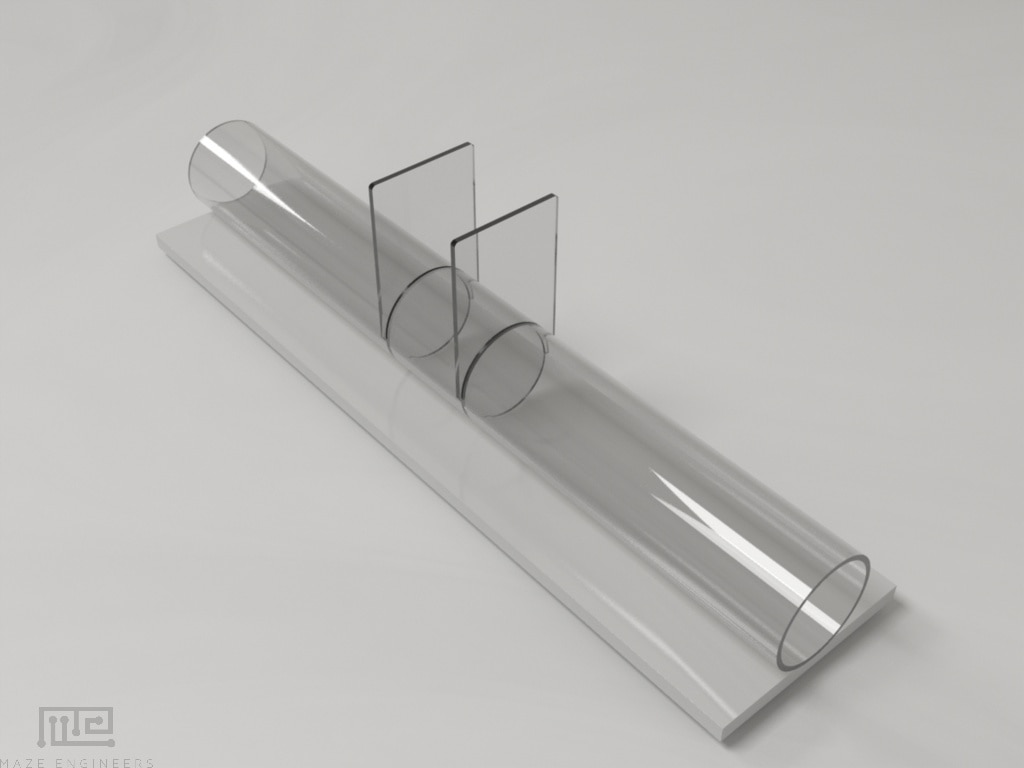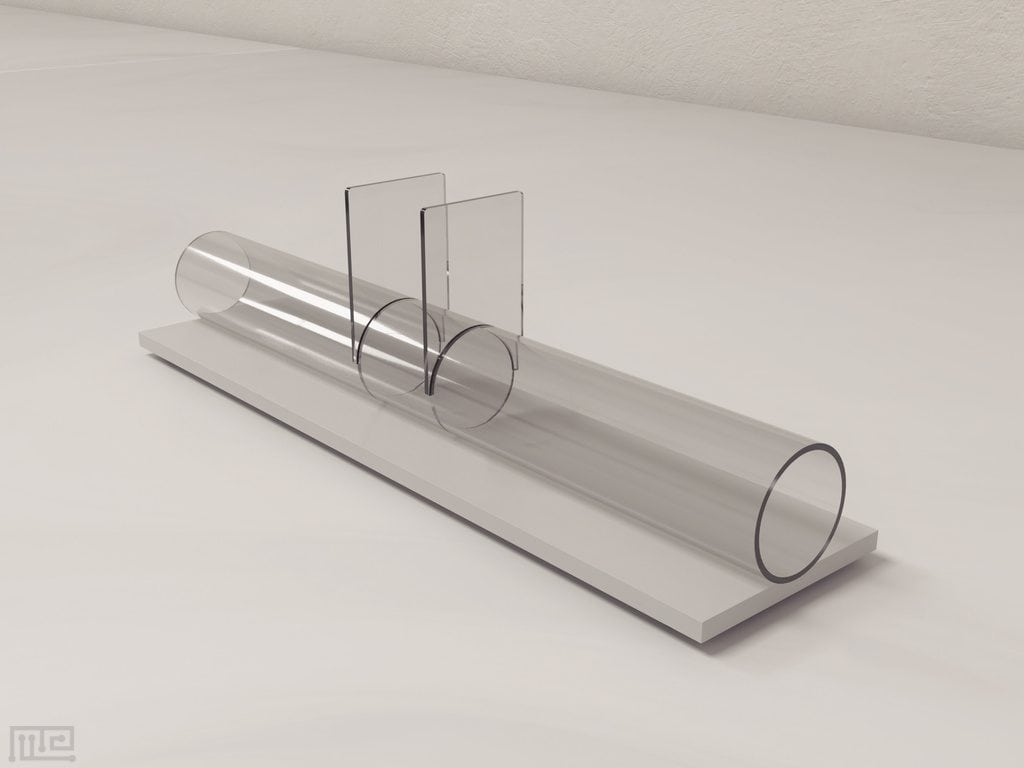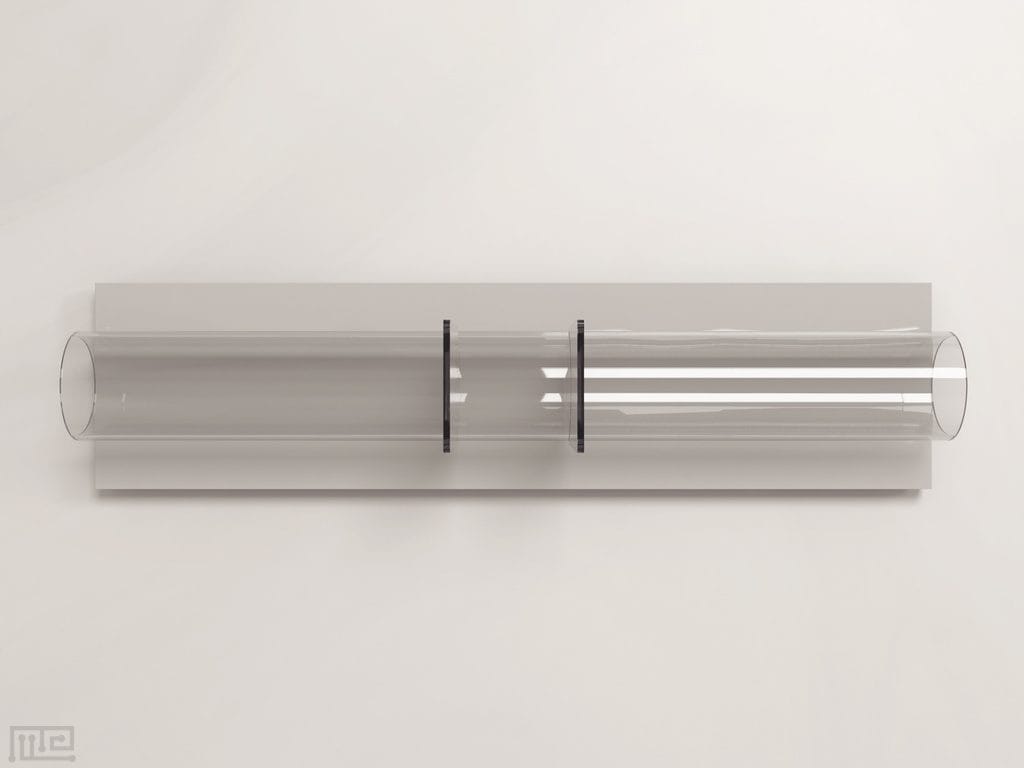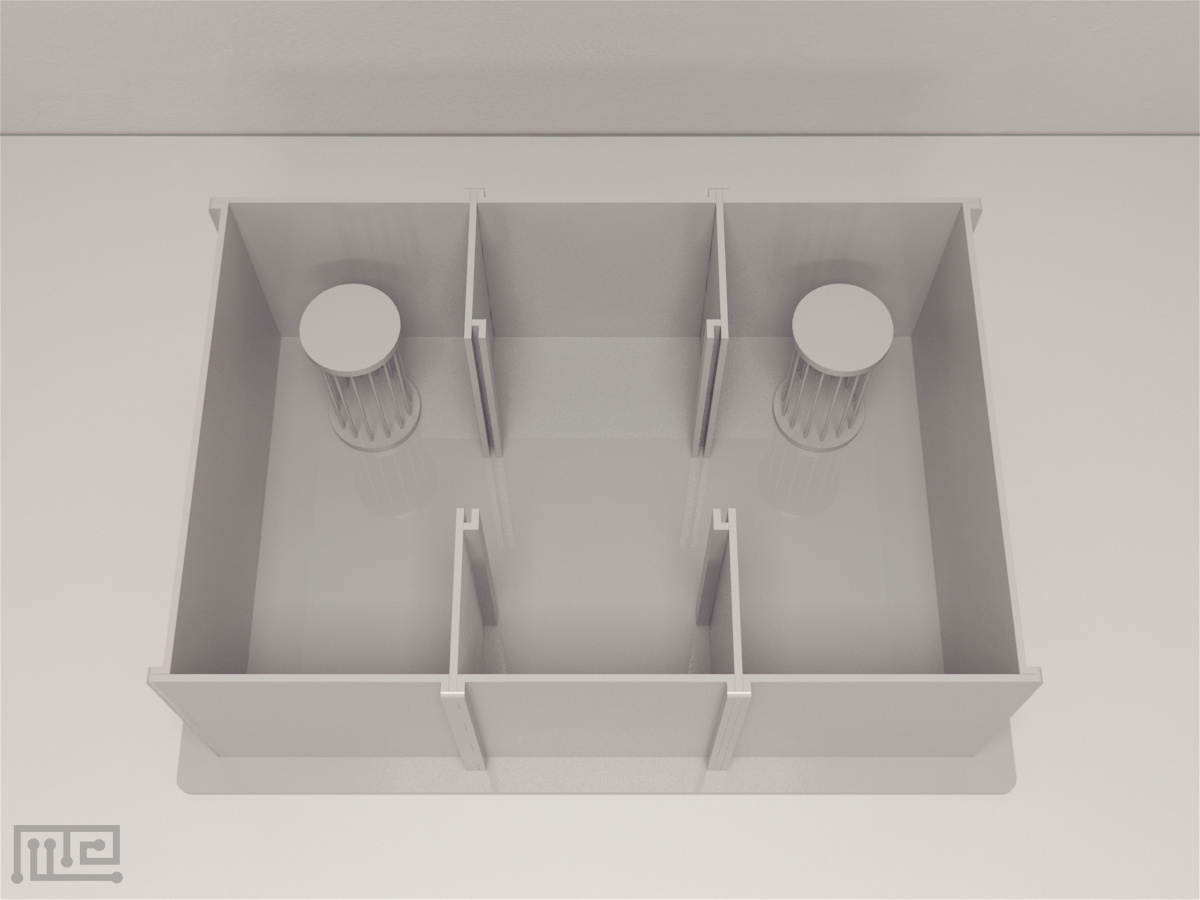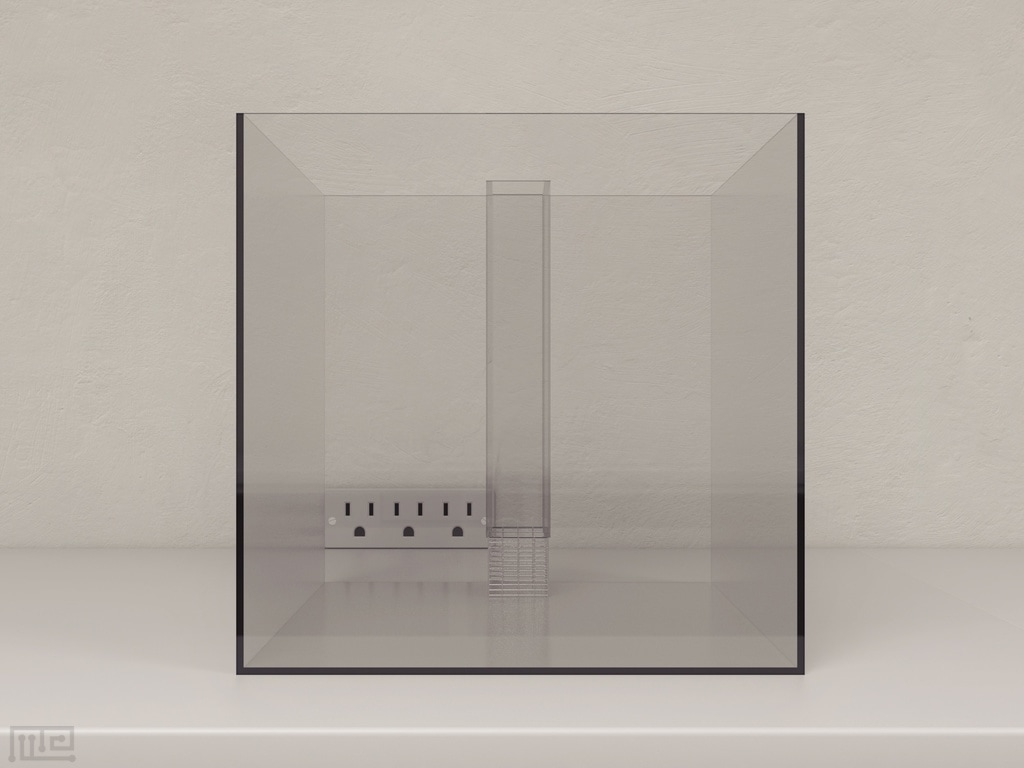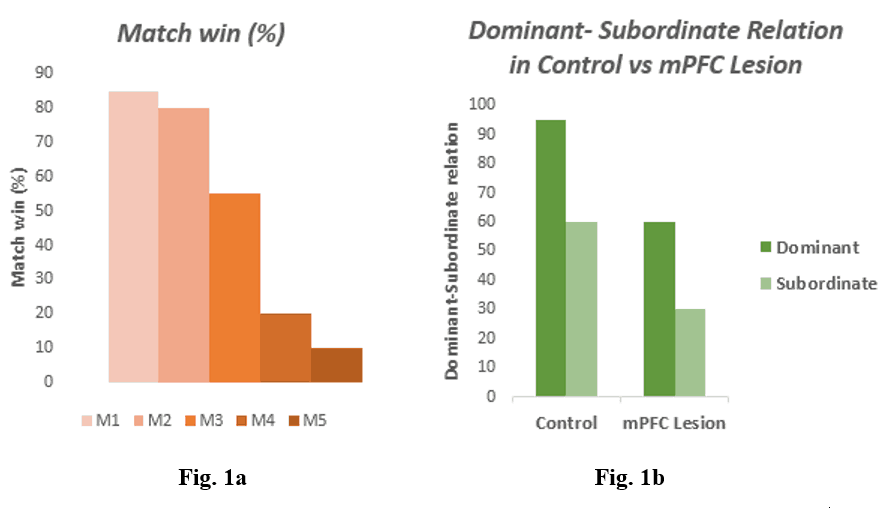Product Description
The tube dominance test is a behavioral test used to assess social dominance in rodents such as rats and mice. The test is based on the assumption that dominant animals will be more likely to displace a subordinate animal in a confined space.
The tube dominance test apparatus typically consists of a clear tube, with a diameter slightly larger than the animal being tested, that is placed in the cage of the animal. The animal is placed at one end of the tube, and a second animal is placed at the opposite end of the tube. The behavior of the animals is observed and recorded, and the amount of time each animal spends in the tube is used to determine which animal is dominant.
The tube dominance test is widely used in neuroscience research to study the effects of drugs, chemicals, or other manipulations on social behavior and dominance in animals. It is a simple, non-invasive, and inexpensive way to assess dominance relationships in animal populations.
Our apparatus includes easy-to-use clear doors to allow the start and stop of testing. Sizing is available for mice and rats please inquire about custom sizing.
We recommend cleaning this apparatus with unscented soap and water.
Accessories
Price & Dimensions
Mouse
$ 490
Per Month- Length: 30cm.
- Diameter: 3.5cm.
- Entry to Door: 13cm.
- Distance between doors: 4cm
- Acrylic: 0.6cm thick
Rat
$ 590
Per Month- Length: 48cm.
- Diameter: 5.5cm.
- Entry to Door: 20cm.
- Distance between doors: 8 cm
- Acrylic: 0.6cm thick
Documentation
Introduction
The tube dominance model is an extensively used task to measure social hierarchy and social dominance in rodents.
Social hierarchy is actively regulated by the Prefrontal cortex (PFC) region of the brain.
Excitatory synapses in the dominant rodent are more active in relation to their subordinate counterpart. When the medial prefrontal cortex’s synaptic strength of dominant mice is lessened, the mice became subordinate. On the other hand, when the synaptic strength is enhanced in the submissive rodent, this rodent ascended the social hierarchy tree.
The tube dominance model quantifies socially dominant behaviors in rodents by determining the social ranks of the subjects under study.
Social domination is operationally defined as winning at points of social conflict. (Hand, 1986) Such a social conflict scenario is mimicked by the dominance tube which scores social dominance in rodents. (Wang et al., 2011)
The dominance tube was developed by G.Lindzey (Lindzey et al., 1961). Therefore, it is also known as the Lindzey tube. In this model, they determined the social dominance in genetically related mouse strains.
Correlation of Test Tube Ranks
The winners of the dominance test protocol are also dominant in three significant behaviors that are correlated to the test tube ranks. These behaviors support the validity of the dominance tube paradigm as a reliable quantifier of social dominance.
Dalila Effect
Dalila effect is a grooming behavior often observed in rodents, and the most dominant rodent (barber) trims and removes the whiskers of its cage mates. In general, the barber is the winner of the dominance task over its cage mates. (Kalueff et al., 2006; Strozik and Festing, 1981).This specifies that whisker trimming is a behavioral characteristic of dominance.
Proactive wooing
Another behavior that correlates to the test tube rank is the proactive courtship. Male mice that ranked high in dominance task also woo actively (approximately 70 kHz ultrasonic vocalization) during courtship (Nyby et al., 1976), whereas submissive mice depicted almost no ultrasonic vocalization (De Catanzaro and Ngan et.al.,1983)
Urine Marking
Urine marking is another trait that is common with rodents ranking top in the dominance test tube. The chemical clues in urine indicate territorial boundary and social status in rodents. (Ralls, 1971)
When dominant-submissive mice are separated by a partition, dominant rodents tend to urinate more often and near the partition separating the group-housed counterpart. On the contrary, the subordinate mouse only void urine near the corners. (Desjardins et al., 1973).
Apparatus and Equipment
The dominance test tube consists of a plexiglass tube. Guillotine doors can be installed at the entrance of each goal box to hold the subordinate subjects. A small plexiglass divider is inserted midway where the confrontation takes place. The diameter of the tube is wide enough for a mature subject to pass through it rapidly, but not wide enough to allow two rodents to pass each other in the tube.
Training Protocol
The purpose of the tube dominance test is to evaluate social dominance in rodents in a control vs. disease model/intervention group, by assessing their capacity to defeat the other mouse in the tube.
Pre-training for tube dominance task
The subjects are trained for three consecutive days with five training sessions per day.
The subjects are deprived of food and allowed to run through the entire course of the tube until they reach the goal box to get a food reward.
During training sessions, the direction of the subject is also alternated and the time is recorded to reach the goal box on each session.
Evaluation of social hierarchy and social dominance
On the test day, the subjects are introduced to the goal box concurrently at the entrances of the tube. When the subjects reach the center of the apparatus, the plexiglass divider is removed, and the confrontation takes place.
The procedure is continued until one mouse forces the other to retreat to the goal box with all four feet inside it.
The subjects’ goal box and the order of the opponent are rotated systematically on consecutive days.
The test procedure is repeated for five days with three matches per day. The subjects are completely deprived of food during all the test trials.
Sample Data
Two sample graphs, one depicting the win percentage and the other correlating Dominant-Subordinate behaviors in control versus medial prefrontal cortex (mPFC) lesion group (Fig.1b) can be visualized.
Match win % graph represents the match win percentages over the course of a round-robin tournament for the pool of five mice. Fig.1a
Strengths & Limitations
Strengths
This protocol depicts exceptional stability and transitivity to either genetically different strains of mice or closely related cage mates from an identical strain. (Wang et al,. 2011)
The test tube may be more natural, less interfering, and also present less stress in the mouse when compared with social defeat-based paradigms.
Understanding the concept of neuronal circuits of dominance hierarchy may provide ample data regarding the development of therapies for social stress-related clinical phenomena.
Limitations
Lack of test training and stabilization of ranks are possible variations that may alter the results of the test. Therefore, in order to ensure cogency, test protocols must be standardized.
Factors other than dominance may also add to the outcome of each individual dominance assay. Thus, it is best to consider two dominance assays based on different sensory/motor aspects to diminish ambiguity.
Summary and Key Points
The tube dominance task is a renowned protocol used to assess social hierarchy and social dominance in rodents.
Dalila Effect, proactive wooing, and urine marking behaviors correlate the test tube ranks.
The apparatus consists of a plexiglass tube, and a small plexiglass divider is placed in the center.
References
Hand. Resolution of social conflicts – dominance, egalitarianism, spheres of dominance, and game-theory. Q. Rev. Biol. 61, 201–220 (1986)
Lindzey et al. Social dominance in inbred mouse strains. Nature 191, 474–476 (1961)
Wang et al. Bidirectional control of social hierarchy by synaptic efficacy in medial prefrontal cortex. Science 334, 693–697 (2011)
Kalueff, et al. Hair barbering in mice: implications for neurobehavioural research. Behav. Processes 71,8–15 (2006)
Strozik and Festing. Whisker trimming in mice. Lab. Anim. 15, 309–312 (1981)
Nyby et al. Social status and ultrasonic vocalizations of male mice. Behav. Biol. 18, 285–289 (1976)
De Catanzaro and Ngan et.al. Dominance in intermale encounters and subsequent sexual success in mice. J. Comp. Psychol. 97, 269–278 (1983)
Ralls. Mammalian scent marking. Science 171, 443–449 (1971)
Desjardins. et al. Social rank in house mice: differentiation revealed by ultraviolet visualization of urinary marking patterns. Science 182, 939–941 (1973)
Van den Berg, Wouter, Lamballais, and Kushner. “Sex-Specific Mechanism of Social Hierarchy in Mice.” Neuropsychopharmacology 40.6 (2015): 1364–1372.

